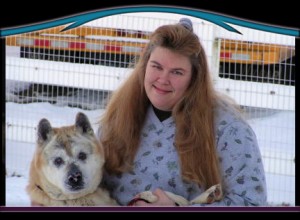Dominant & Recessive Inheritance in Dogs

Written By:
Col (Retd) K. M. Roy, Pakistan
President KCP & FCI All Breed Judge
Author of “The Magnificent Labrador”
Dog Breeder & Trainer
If I am asked to explain dominant and recessive inheritance in dogs I will have to explain basic genetics otherwise many things will not be clear. To properly understand inheritance in dogs, one has to understand some basic genetics. Each cell in dog contains 39 pairs of chromosomes. One chromosome from each pair is inherited from dam and one is inherited from sire. The chromosomes contain all the genes a pup inherit from his parents. A chromosome contains 25 to 30 thousand genes. A gene is the basic physical and functional unit of heredity. With the exception of the sex chromosomes, each dog has two copies of genes, which a pup gets one from mother and the other from father. A gene has many traits. About 99.7 genes in dogs are common and only 0.5 percent are responsible for differences between one dog and other.
An allele is a variant form of a gene. Some genes have a variety of different forms, which are located at the same position on a chromosome. These traits are passed on by parents to pup in an established genetic mode of inheritance. How the alleles interact with each other will determine what traits you will see in the dog, referred to as phenotype. With 30 thousand canine genes to work with and no way to know for sure exactly which versions a particular dog carries we are not doing much more than rolling dice unless we develop a thorough understanding of modes of inheritance.
Inheritance is not only dominant and recessive; it is more complex than that. The basic mode of inheritance is simple dominance. Black X Yellow color in Labradors is a classic example. The allele for black is dominant; the allele for yellow is recessive. If a dog has at least one copy of the dominant black allele, it will be black. For a dog to be yellow, a color produced by the recessive allele, it must have two copies. A black dog might produce yellow puppies if it carries a recessive allele, but a yellow dog cannot produce black puppies unless bred to a black. Then there is co-dominance. This is a form of dominance wherein the alleles of a gene pair in a heterozygote are fully expressed. This results in offspring with a phenotype that is neither dominant nor recessive. A typical example of co-dominance is the coat colour and texture, colour of eyes, physical structure and so on. Other is autosomal recessive inheritance. In autosomal recessive inheritance, two copies of a allele are required for a dog to express the phenotype.
You cannot tell from appearance whether a dog exhibiting a dominant phenotype like black is also carrying a recessive allele. However, knowing the phenotypes of dogs in its pedigree can give you an indication of whether it might carry the recessive.
Then there is incomplete dominance. This intermediate inheritance in which one allele for a specific trait is not completely expressed over its paired allele. This results in a third phenotype in which the expressed physical trait. In this the expressed physical trait is a combination of the phenotypes of both alleles. Unlike complete dominance inheritance, one allele does not dominate or mask the other. Incomplete genetic dominance is similar to but different from co-dominance. Whereas incomplete dominance is a blending of traits, in co-dominance an additional phenotype is produced and both alleles are expressed completely.
Most important thing to understand is that unfortunately, most traits are not inherited in a simple, single-gene fashion. Many are polygenic, resulting from the action of multiple genes. There is no way to know the genotype of any particular dog for any polygenic trait. The best the breeder can do is make an educated guess. Canine hip dysplasia (HD) is a prime example. Two sound dogs can produce dysplastic offspring and dysplastics can produce sound pups. A number of different genotypes arise from polygenic traits consisting of various combinations of dominant and recessive alleles.
Individuals inheriting only dominant alleles will have an extreme expression of the dominant phenotype and individuals inheriting no dominant alleles will have an extreme expression of the recessive phenotype; individuals inheriting different combinations of dominant and recessive alleles will exhibit varying degrees of the intermediate phenotype.
Lastly a few words about sex-linked inheritance. This is when a gene controlling a characteristic is located on a sex chromosome. Only females can be carriers sex-linked trait; males cannot be heterozygous carriers of sex-linked trait. For example Cryptorchidism (when testicles ado not descend) is a sex-limited recessive trait in dogs. This means only female carries it. A dog will NEVER give it to his pups.










